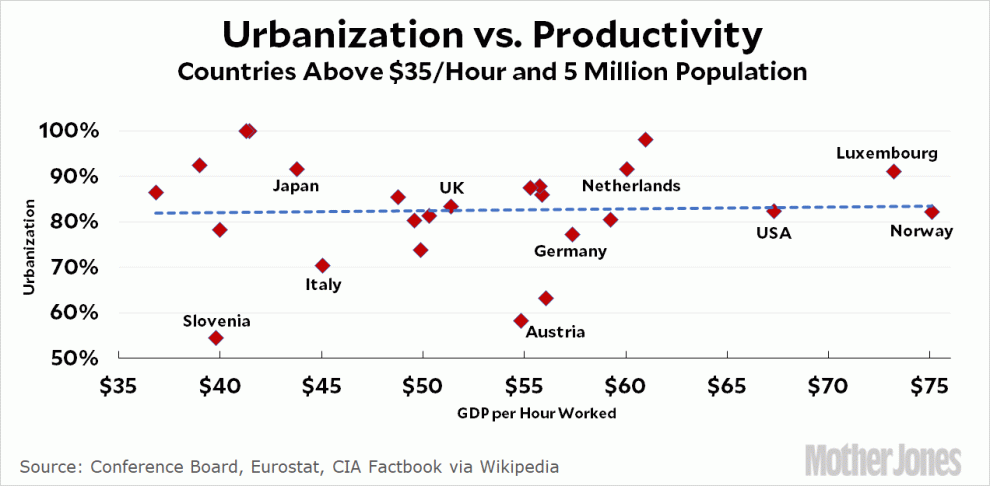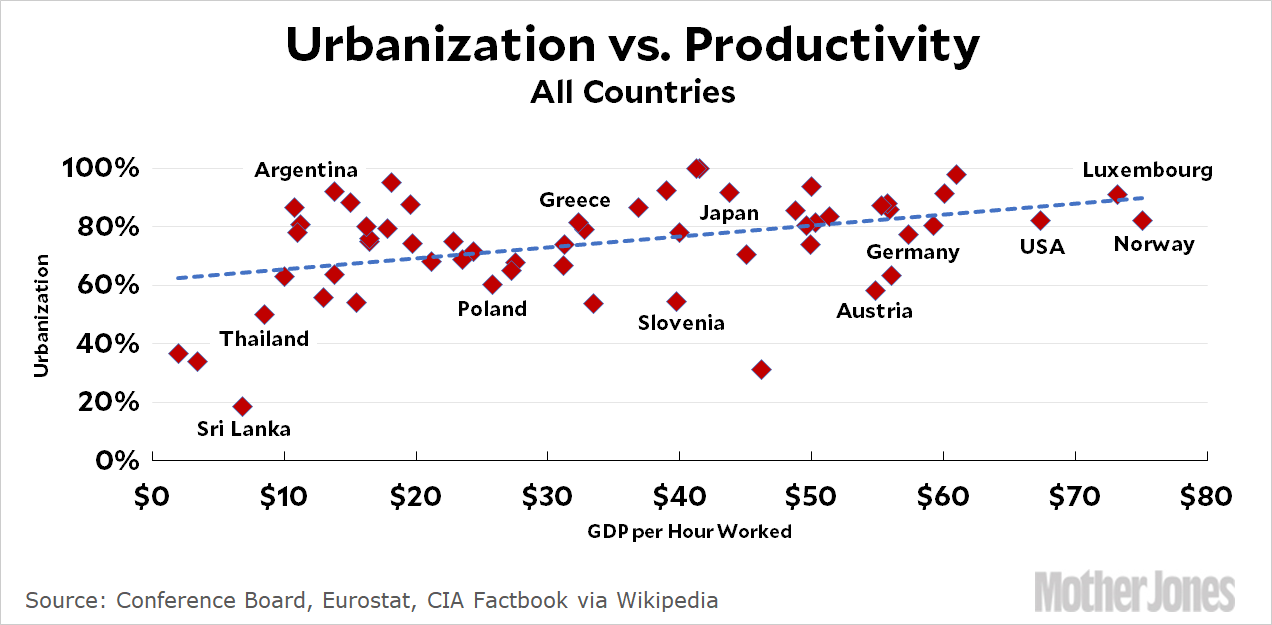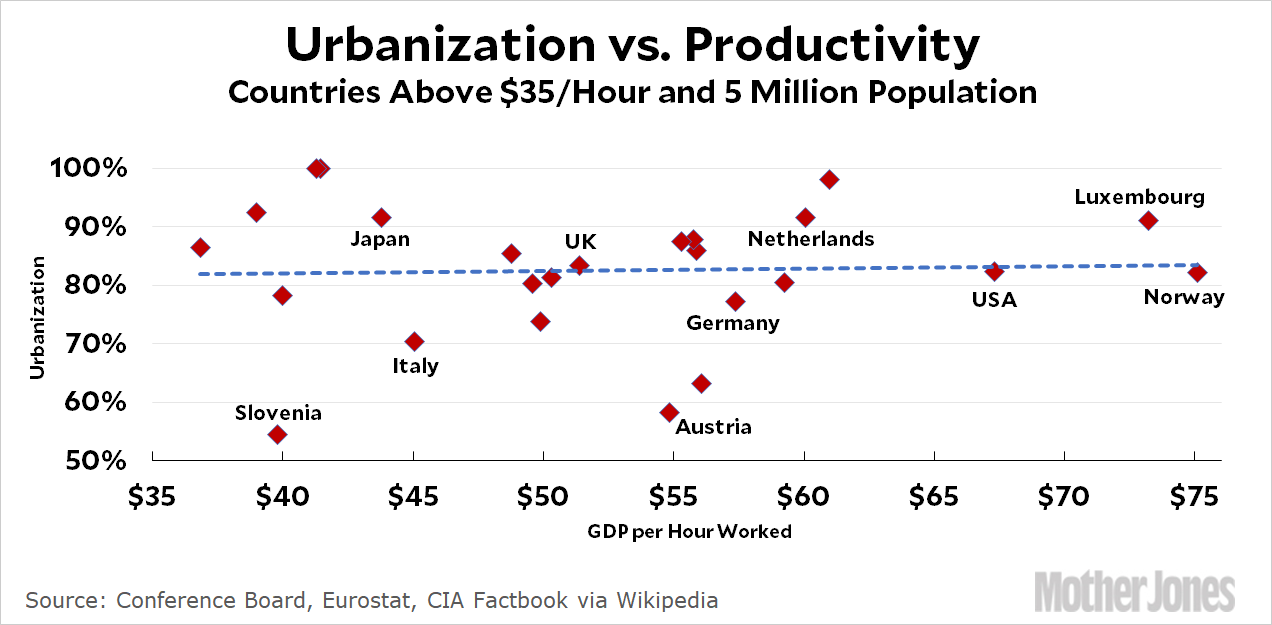
This is a bit out of the blue, but earlier today I was pondering the idea that big cities make a country more prosperous. One way of looking at this is to do a simple comparison of the countries of the world based on their productivity and their degree of urbanization. “Urbanization” isn’t precisely defined, which makes this pretty rough but still sort of interesting. Here’s the comparison for a wide assortment of countries whose productivity is measured by the Conference Board and Eurostat:

Sure enough, higher urbanization = higher GDP. But here it is for a smaller selection of rich countries:

Urbanization does seem to be associated with higher productivity if you compare across all countries, but the effect disappears at about $35 per hour worked. Above that level—and above 50 percent urbanization—the association disappears.
There are probably lots of ways to tweak this to show whatever you want, and this kind of crude scatterplot isn’t something to be taken too seriously. Still, I was surprised that even in a simple plot like this there was no association at all. Take it for what it’s worth.















